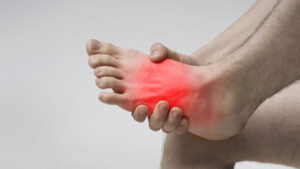Nail fungus, medically known as onychomycosis, is a common and bothersome condition. It often starts innocently enough with a minor discoloration or thickening of the nails. However, many people wonder whether nail fungus can spread to the skin, leading to concerns about its duration and potential risks. In this article, we’ll explore this issue in depth and provide valuable insights into prevention and treatment options.
Understanding Nail Fungus
Nail fungus is a fungal infection that primarily affects the nails, can nail fungus spread to skin?, the answer is yes. It typically begins under the nail, thriving in warm, damp environments. Common causes include:
- Fungi Exposure: Exposure to dermatophyte fungi, often found in damp places like swimming pools or locker rooms.
- Poor Nail Hygiene: Neglecting proper nail care and hygiene.
- Immunosuppression: Weakened immune systems can increase susceptibility to fungal infections.
Nail Fungus and Skin Connection
While nail fungus primarily affects nails, it can indeed spread to the skin around the nail. The fungus can extend beyond the nail bed and into the surrounding skin, causing conditions like athlete’s foot. This happens when:
- Nail Damage: Cracked or damaged nails create entry points for the fungus.
- Proximity: The fungus can easily travel from the nail to the nearby skin.
- Neglect: Ignoring early signs of nail fungus can lead to its progression.
Risks and Complications
Allowing nail fungus to spread to the skin can lead to several risks and complications:
- Skin Infections: Fungal infections on the skin can be itchy, painful, and uncomfortable.
- Delayed Healing: Infected skin can slow down the healing process.
- Recurrence: Without proper treatment, nail fungus may persist and continue to affect the skin.
Prevention
Preventing nail fungus from spreading to the skin involves practicing good nail and foot hygiene:
- Keep Nails Trimmed: Regularly trim and clean your nails.
- Avoid Damp Conditions: Wear breathable shoes and change socks frequently.
- Use Antifungal Products: Consider antifungal powders or sprays, especially in public places.
Treatment Options
Effective treatment is essential to prevent nail fungus from spreading. Options include:
- Topical Treatments: Over-the-counter creams and ointments.
- Oral Medications: Prescription medications for severe cases.
- Laser Therapy: Innovative laser treatments that target the fungus.
- Surgical Removal: In extreme cases, removing the nail may be necessary.
Lifestyle and Hygiene Tips
In addition to treatment, adopting healthy habits can help prevent nail fungus:
- Proper Footwear: Choose shoes that allow your feet to breathe.
- Dry Your Feet: Make sure your feet are thoroughly dry after bathing.
- Avoid Sharing Personal Items: Sharing items like nail clippers can transmit the fungus.
Nail fungus is a persistent condition that can indeed spread to the skin if left untreated. However, with proper care, early intervention, and professional guidance, you can effectively manage it. Remember, it’s essential to prioritize prevention and take action as soon as you notice any signs of nail fungus.
If you have concerns about nail fungus or have experienced its spread to the skin, share your experiences or questions in the comments below. For more information on nail health and fungal infections, explore our related articles. Don’t let nail fungus linger – consult a healthcare professional for personalized advice.
Seeking Professional Help
If you suspect nail fungus or skin complications, don’t hesitate to seek professional advice. Podiatrists can provide accurate diagnoses and recommend suitable treatments. Early intervention is crucial for a faster recovery.
















